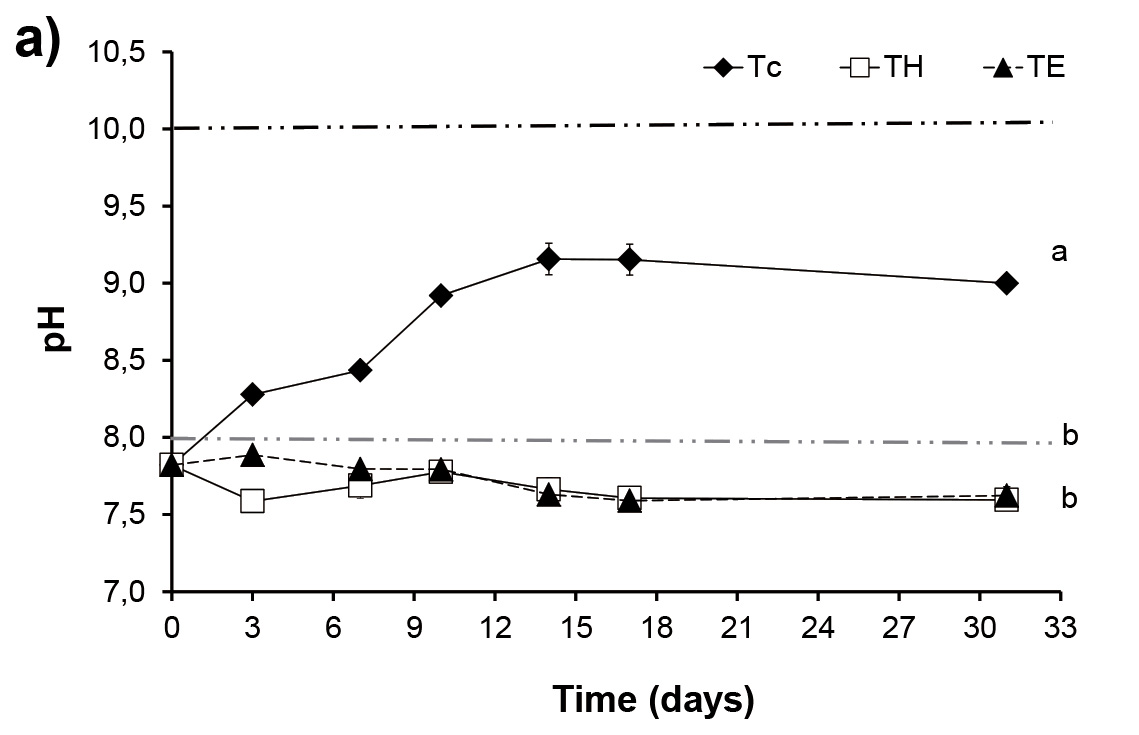Remediación de efluentes provenientes de feedlots mediante el uso de plantas acuáticas
Palabras clave:
sistema de engorde a corral, efluente, polución, fitorremediación, macrófitaResumen

Feedlots have increased in several regions of Argentina, particularly in the Pampas. The absence of adequate treatments of the effluents produced in these establishments creates serious problems to the society. Phytoremediation can be defined as inexpensive and environmentally sustainable strategy used to remove pollutants by plants. The aim of this study was to evaluate the remediation potential of two macrophyte species (Eichhornia crassipes and Hydrocotyle ranunculoides) on a feedlot effluent. This effluent was treated with these species for 31 days. Control and macrophyte treatments decreased dissolved inorganic nitrogen (DIN), Kjeldahl nitrogen (Kj N), biological oxygen demand (BOD), chemical oxygen demand (COD), total dissolved salts (TDS), total phosphorus (TP), Pb, Zn and Cr levels. At macrophyte treatments, relatively constant pH levels were kept and decreased EC and TDS values were obtained compared to control, mitigating the release of contaminants and potential greenhouse gases to the atmosphere. Moreover, significant increases in biomass were obtained, being higher in E. crassipes. The results allow concluding that the presence of aquatic plants increases the removal rates of nutrients, organic matter and heavy metals from wastewater in approximately 10-17 days for a feedlot effluent with high organic load.
Descargas

Descargas
Publicado
Cómo citar
Número
Sección
Licencia

Esta obra está bajo una licencia internacional Creative Commons Reconocimiento-NoComercial-CompartirIgual 3.0.
Aquellos autores/as que tengan publicaciones con esta revista, aceptan las Políticas Editoriales.










.jpg)




